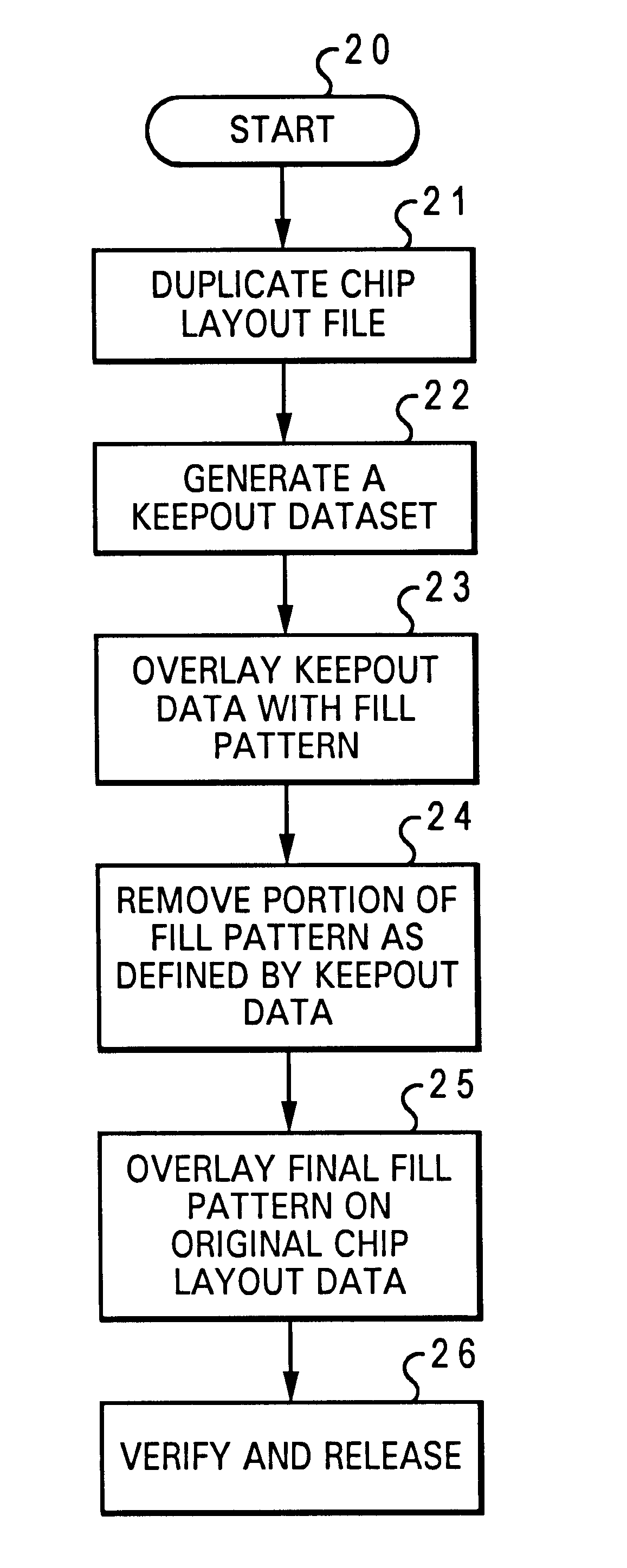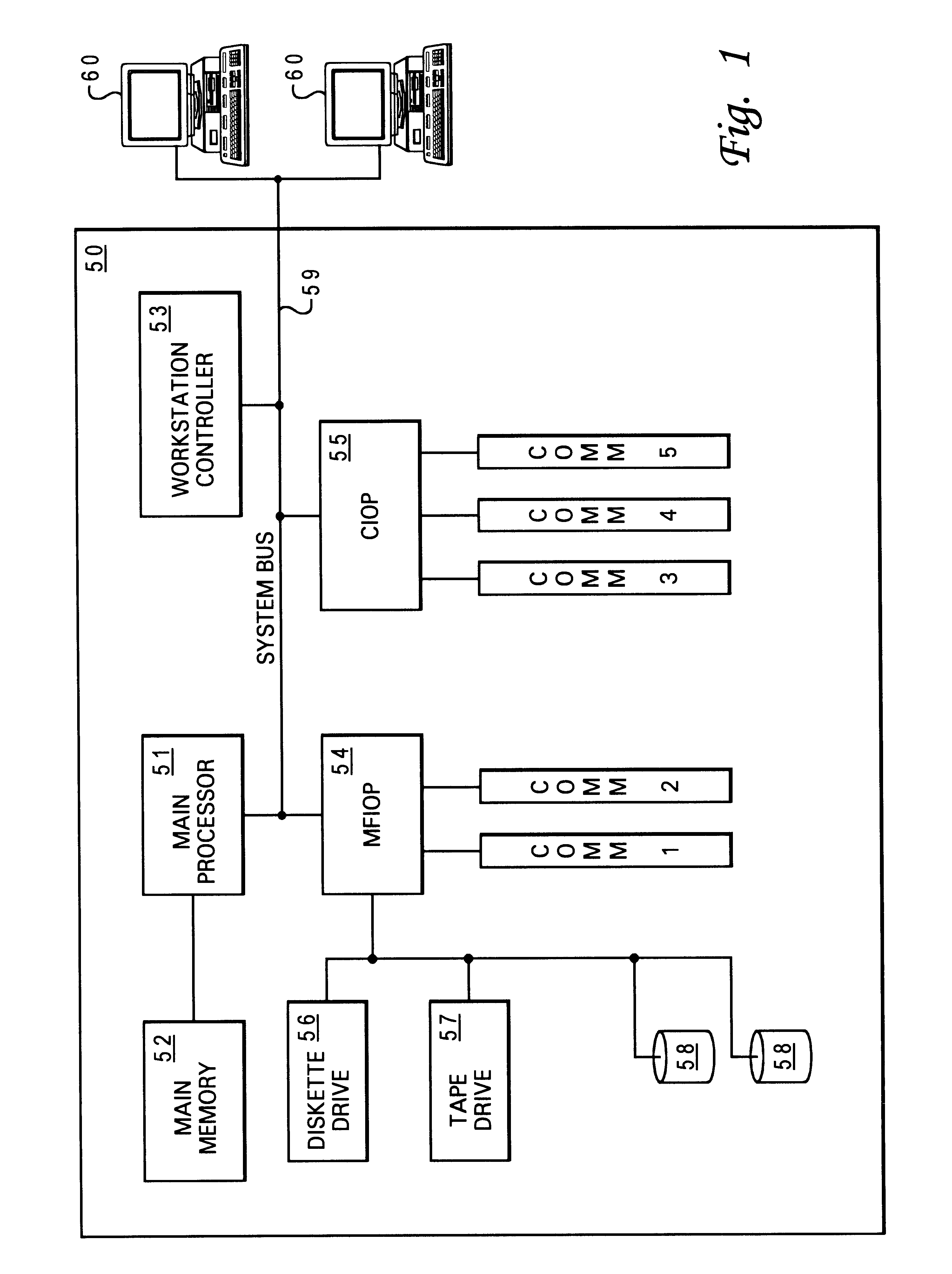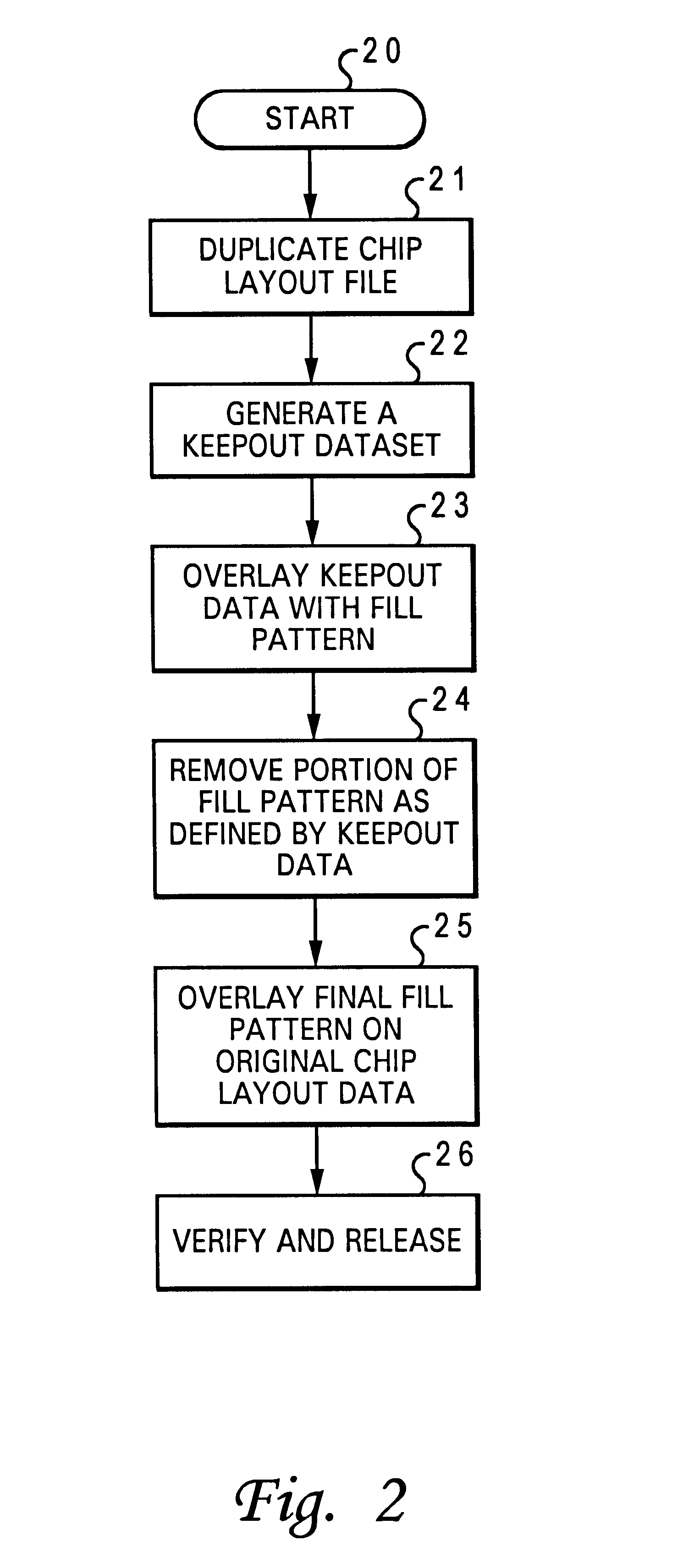Method for providing a fill pattern for an integrated circuit design
a fill pattern and integrated circuit technology, applied in pulse technique, instruments, therapy, etc., can solve the problems of metal below the surface, non-planar surface, and particularly serious dishing effect,
- Summary
- Abstract
- Description
- Claims
- Application Information
AI Technical Summary
Problems solved by technology
Method used
Image
Examples
Embodiment Construction
The present invention may be executed in a variety of computers under a number of different operating systems. The computer may be, for example, a workstation, a midrange computer or a mainframe computer. In addition, the computer may be a stand-alone system or part of a network such as a local-area network (LAN) or a wide-area network (WAN). For the purpose of illustration, a preferred embodiment of the present invention, as described below, is implemented on a Unix workstation such as a Sun Ultrasparc Workstation.
Referring now to the drawings and in particular to FIG. 1, there is illustrated a block diagram of a computer system in which a preferred embodiment of the invention can be executed. Within a computer system 50, a main processor 51 is coupled to a main memory 52 and to a multiple-function I / O processor (MFIOP) 54. Main processor 51 may include a single processor or multiple processors. Several peripheral storage devices such as a diskette drive 56, a tape drive 57, and di...
PUM
 Login to View More
Login to View More Abstract
Description
Claims
Application Information
 Login to View More
Login to View More - R&D
- Intellectual Property
- Life Sciences
- Materials
- Tech Scout
- Unparalleled Data Quality
- Higher Quality Content
- 60% Fewer Hallucinations
Browse by: Latest US Patents, China's latest patents, Technical Efficacy Thesaurus, Application Domain, Technology Topic, Popular Technical Reports.
© 2025 PatSnap. All rights reserved.Legal|Privacy policy|Modern Slavery Act Transparency Statement|Sitemap|About US| Contact US: help@patsnap.com



